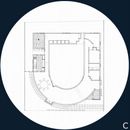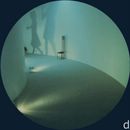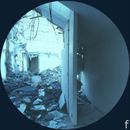The U-House was built in 1976 in the centre of Tokyo. It was designed by the architect Toyo Ito for his older sister, who had just lost her husband to cancer. In 1997 the house was demolished before Toyo Ito's eyes. How does one explain such an ending?
The Mourners' wishes
The client and her family had lived in one of the city's high-rise apartment. Following her husband's death, the widow requested that the architect build a house for her and her small daughters where they could enjoy the close contact with the soil and plants that their former home had lacked. She also suggested that the house be L-shaped to enable all members of the family to have visual contact with one another. By coincidence, the site next to the architect's house was for sale - the same site on which the widow had lived before she was married. It was as if she wanted to grasp hold of her memories in order to help reunite her family during such a difficult time.
In the widow's conversations with the architect, the emphasis on organising functional spaces gradually disappeared and instead turned more towards the symbolic value of the space. Thus the house changed its initial L-shape to become a concrete construction with a U-shape, a form that would create greater light effects and a stronger relationship between the inhabitants.
The life of the house
The U-House consisted of two long corridors, one of which ended at the girls' rooms, the other of which led through the kitchen and bathroom and onto the mother's bedroom. Both of the corridors were dark and led into the light - a source originating from the arc of the U. This multi-use space used for playing, dining and meditating, had its walls and ceiling painted white and floor covered with a carpet, also white. In this space the light was diffused and gave a soft texture, but a cut in the ceiling directed the daylight in a straight diagonal line. The powerful light effects were reinforced by the pure whiteness of the interior, which seemed flat and without any three-dimensionality. It was like a screen where the images and floating shadows of the inhabitants were projected; a space to project the human being beyond his or her body.
Twenty-one years after the completion of the house, the family was ready to re-establish its links with the outside world. The first one to move away was the older daughter. She had never thought of whether or not it was comfortable to live in the house, although she refers to the house as a coffin. This was perhaps best reflected by the behaviour of her many pets, all of whom had totally refused to be alone in the enclosed courtyard. The mother later moved to a smaller flat, but being a musicologist she had enjoyed the music echoing on the bare walls in the old house. The youngest daughter was the last to move out. She had developed certain sensitivity for aesthetics in this house that was reflected in her appreciation of Kandinsky and later, her eventual position as a museum director.
The last thing we know about the story of the house is from a powerful image in a photograph that illustrates its demolition. Instead of interpreting it as a destruction of a home, it is a sign of another stage through which the family progresses. The demolition is a symbol of renewal of life and consequently, we can argue that this was a house for mourners.
Photos: Tomio Ohashi
Captions for illustrations
A. Toyo Ito (b. 1941) architect.
B. One of the widow's desires was for visual contact between each member of the family.
C. Plan of the U-House.
D. A screen where the images and floating shadows of the inhabitants were projected.
E. The life of the house.
F. Demolition of the house in 1997
More details are available here








